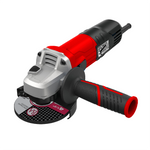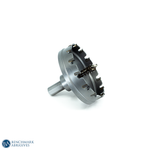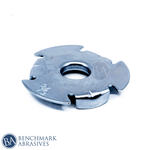
Everything You Need to Know about Spade Bits

Successful woodworking and construction projects start with drilling clean and accurate holes. Spade drill bits are also referred to as paddle bits and are excellent flat blades. Their broad, flat blades make quick work of creating wide openings, making them a go-to choice for electricians, plumbers, and woodworking professionals. But despite their simplicity, using spade bits effectively requires understanding their design, proper techniques, and some helpful tips to avoid common pitfalls. This guide covers everything you need to know about maximizing the performance of spade bits. Whether you're installing wiring through studs or working on a woodworking project, learning how to use spade bits properly can save you time and effort.
What is a Spade Bit?
The spade bit is a flat, broad blade of a bit that features a pilot point attached to a 1/4-inch diameter shank, which is chucked into both regularly-chucked drills and quick-chuck impact drivers. Each fringe of the spade bit's flattened portion is sharpened, and therefore the bottom corners of the sharpened area have a pointed tip, depending on the design and brand of the bit.
Because the drill motor turns the bit, these two sharpened bottom edges will probe the wood stock around the center pilot point, shaving wood out of the opening in a corkscrew-like manner. If the spade bit's cutting edges are incredibly sharp, very long shavings are sometimes produced by the drilling action.
How to Use the Spade Bit?
A bit is comparatively easy to use, but unlike a twist drill, which is somewhat forgiving, the shank of a bit needs to be perpendicular to the workpiece while drilling.
Steps to Use a Spade Bit:
- Mark the middle point of the opening to be drilled on the wood, and chuck the shank of the bit into the drill.
- Line up the bit's pilot tip with the mark, and ensure the drill's shank is perpendicular and square to the wood's surface.
- While employing a drill press, the bit's angle should already be square to the wood's surface, unless the drill table isn't square to the motor.
- Press the trigger of the drill slightly to interact with the motor and switch the bit slowly. Hold the drill as still as possible so that the pilot point stays aligned with the mark on the wood because pilot tips can often "walk away" from the opening's intended center point. Some woodworkers will drill a little pilot hole employing a small-diameter twist bit, then proceed with the spade drill bit's pilot tip positioned within the pilot hole.
Once the pilot tip is properly seated and engaged with the wood, gradually increase the drill speed. Keep drilling steadily until the bit completely passes through to the other side, finishing the opening cleanly.
When the bit's complete width emerges on the backside of the workpiece, slow the speed of the motor and punctiliously extract the bit.
Expert Tips To Use a Spade Bit For Cleaner Holes

One common issue with spade bits is that they tend to splinter and "blow out" the backside of the opening. This blowout can often be quite unsightly on a fine woodworking project.
There are various methods for drilling clean holes with a spade bit, such as:
- Tightly attaching a sacrificial board to the backside of the workpiece when drilling, OR
- Drilling partway through the workpiece until the pilot point penetrates through the wood, then reversing the board, and completing the opening by drilling from the backside.
It's a mistake to drill at a slow speed when using a bit. Although a slow pace is essential when positioning the brad point and starting the opening, you should increase the speed as soon as the hole begins to form. Doing so may produce a cleaner cut with smoother edges.
Sharpening and Refurbishing Dull Spade Bits
- Dull spade bits can significantly reduce drilling efficiency and result in rough, uneven holes. To restore their cutting edge, start by securing the bit in a bench vise.
- Use a high-speed grinder or bench grinder to hone the cutting edges at approximately a 10-degree angle. It ensures both sides are evenly sharpened. Alternatively, a fine file can be used for minor touch-ups, particularly on the edges.
- Remove any rust or debris with a wire brush. Proper maintenance and sharpening extend the lifespan of your bits, ensuring clean, precise cuts every time, and saving you money on replacements.
Conclusion
Mastering the proper use of a spade bit is essential for achieving clean, accurate holes in your woodworking projects. By following strategic techniques, such as supporting the workpiece with a sacrificial board and adjusting drilling speed, you can minimize splintering and blowout. It will result in professional-quality finishes. With practice and the right approach, your drilling will become more precise, efficient, and satisfying.



































































